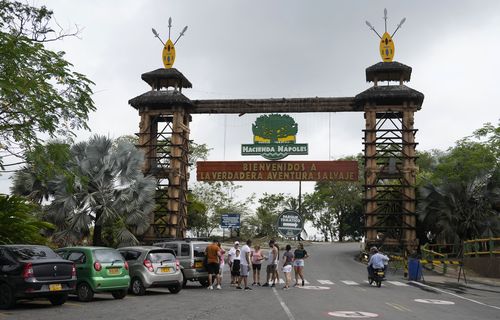The hippo died on the spot, while the person in the car received medical attention from first responders, following the collision Tuesday night on a road between Medellín and the Colombian capital Bogota.
Officials said “situations like these reaffirm that the presence of hippos in the region is an environmental and social problem, which requires inter-institutional articulation to search for comprehensive, in-depth, and timely solutions.”

Hippos were illegally brought into Colombia in the 1980s by Escobar as part of a collection of exotic animals he amassed at his ranch about 250 kilometres (155 miles) from Medellín.
After his death in 1993, authorities relocated most of the animals, but not the hippos because they were too difficult to transport.
Since then, they have reproduced rapidly and there are now between 130 and 160 of the hippos, spread far beyond Escobar’s former ranch where they began as a population of just one male and three females.
Read Related Also: As An Adult, I Have the Right To get Pregnant, Bella Okagbue Breaks Silence Following Rumor Of Being Pregnant
Recently declared an invasive species in Colombia, the hippos’ threat to agriculture and people’s safety has been well documented in research, as has the impact of hippo waste on oxygen levels in bodies of water, which can reduce water quality and cause mass fish deaths.

Authorities have tried to control the population boom of the animals with sterilizations, contraceptive darts, and recently announced a $3.5 million plan to relocate 70 hippos to sanctuaries in Mexico and India.
It is impossible to transport the hippos back to their native Africa since it risks upsetting the local ecosystem there.
On Wednesday, the governor of Antioquia, Aníbal Gaviria, urged the national government to expedite its plan to transfer the hippos to sanctuaries in India and Mexico.

It looks like tinned spaghetti but it kills 2500 people a year




